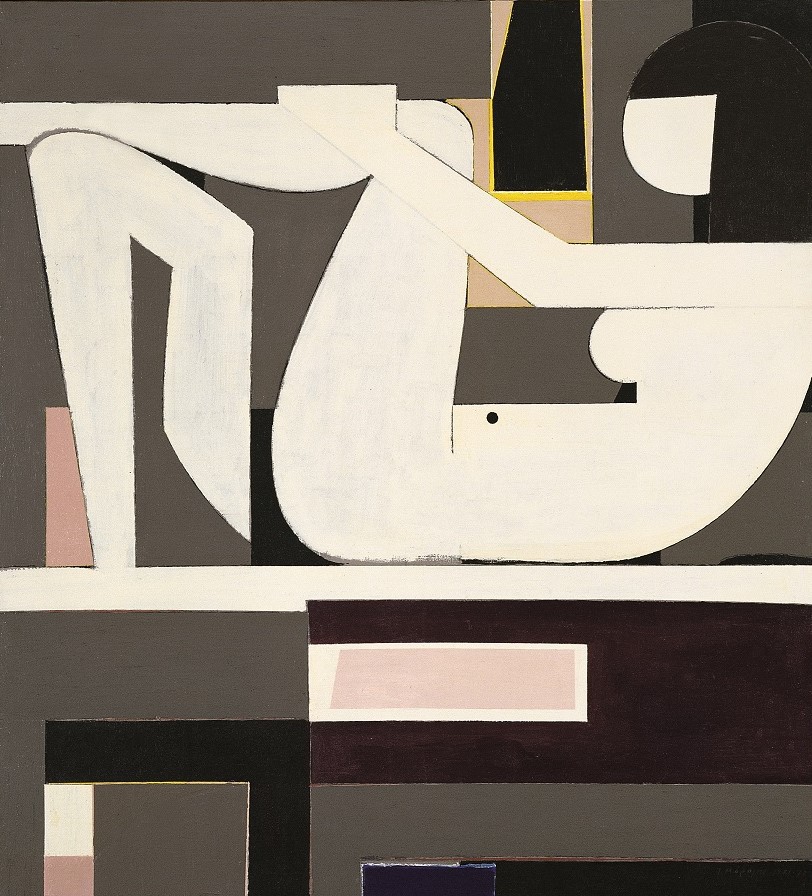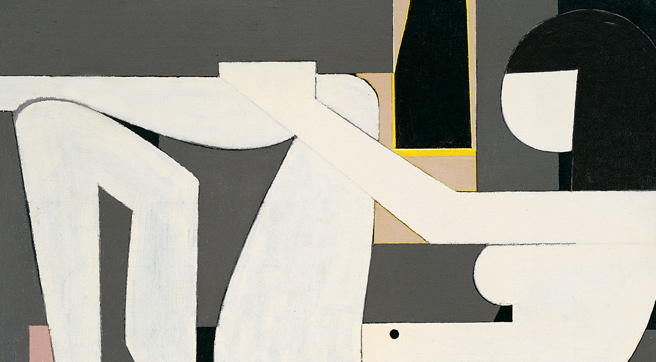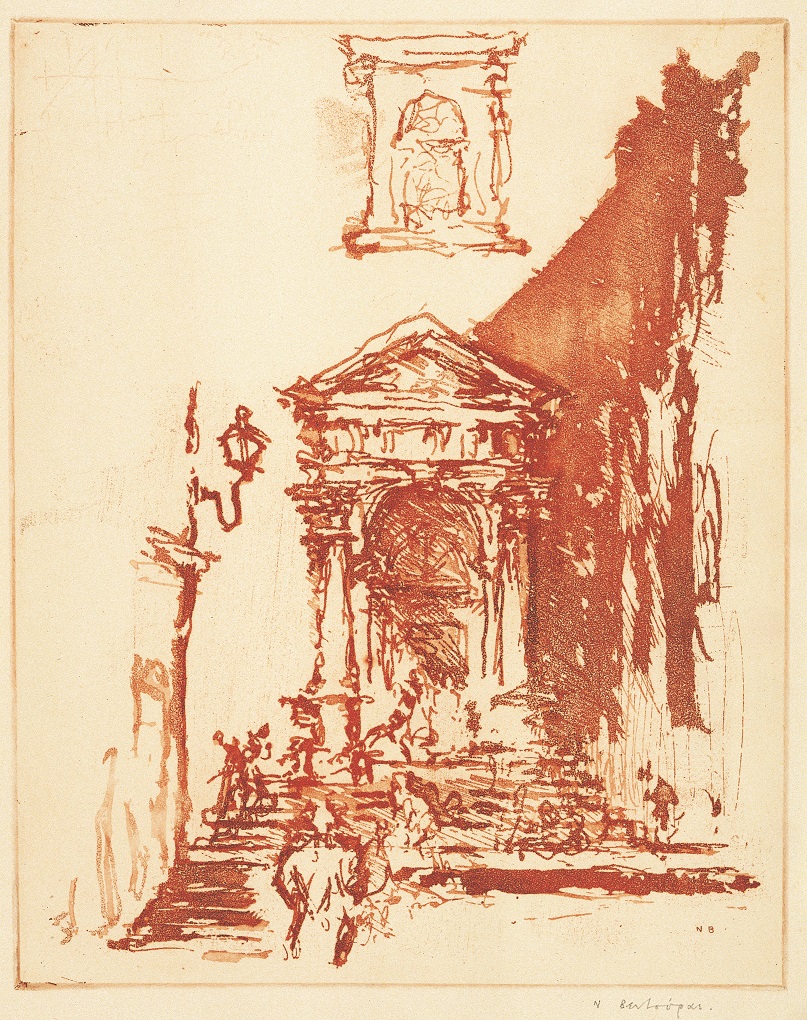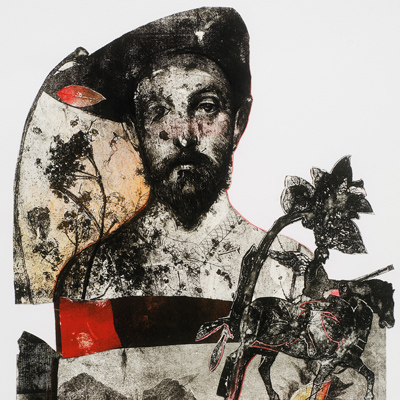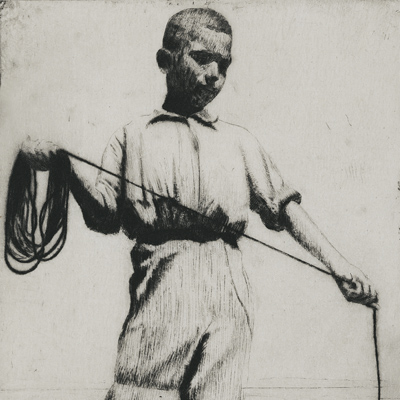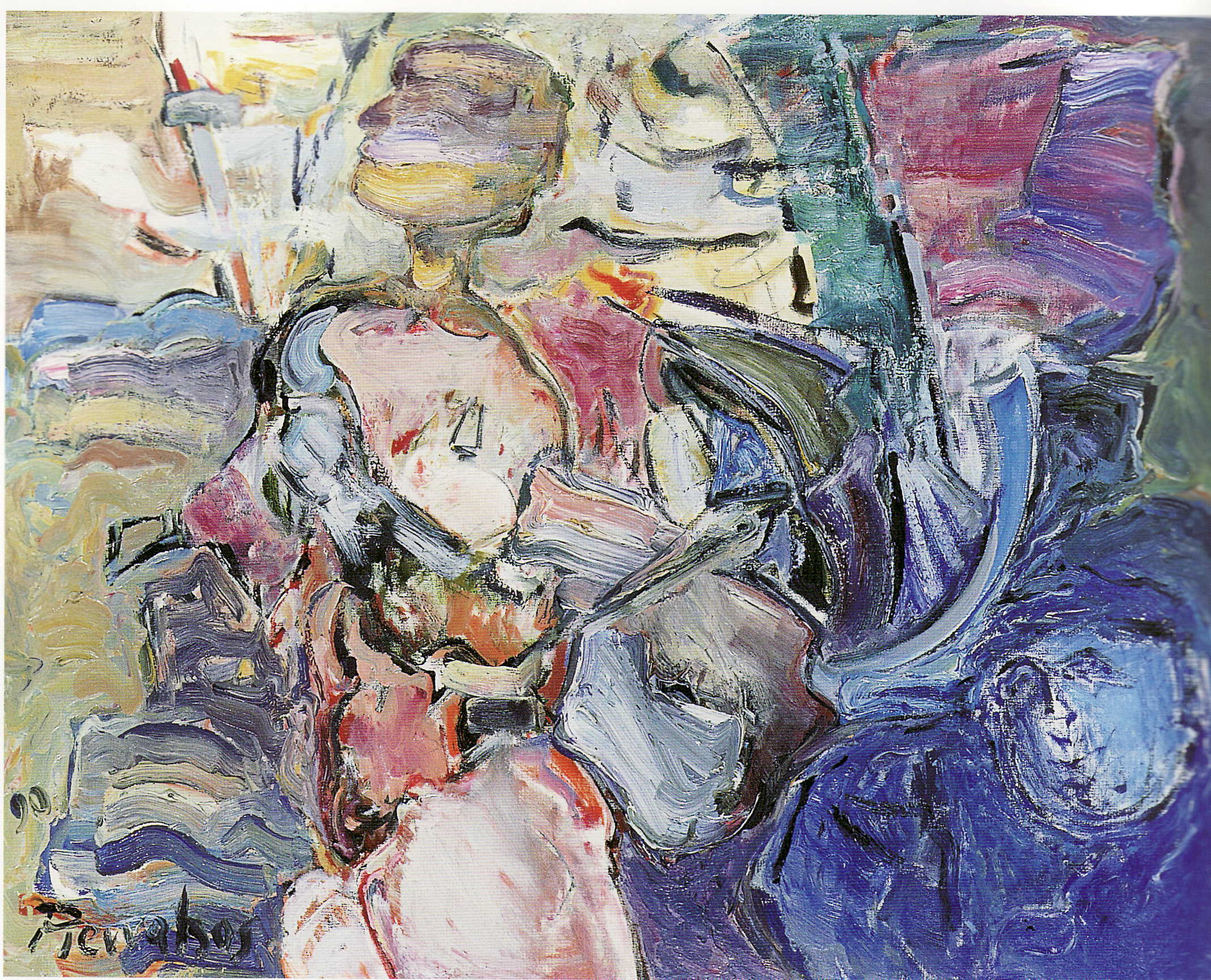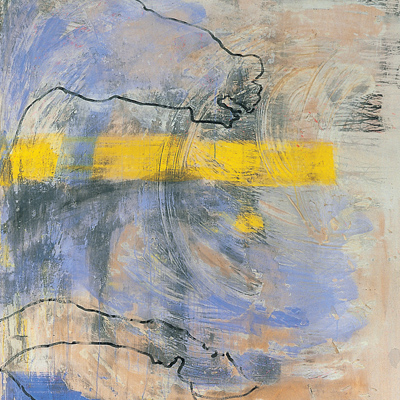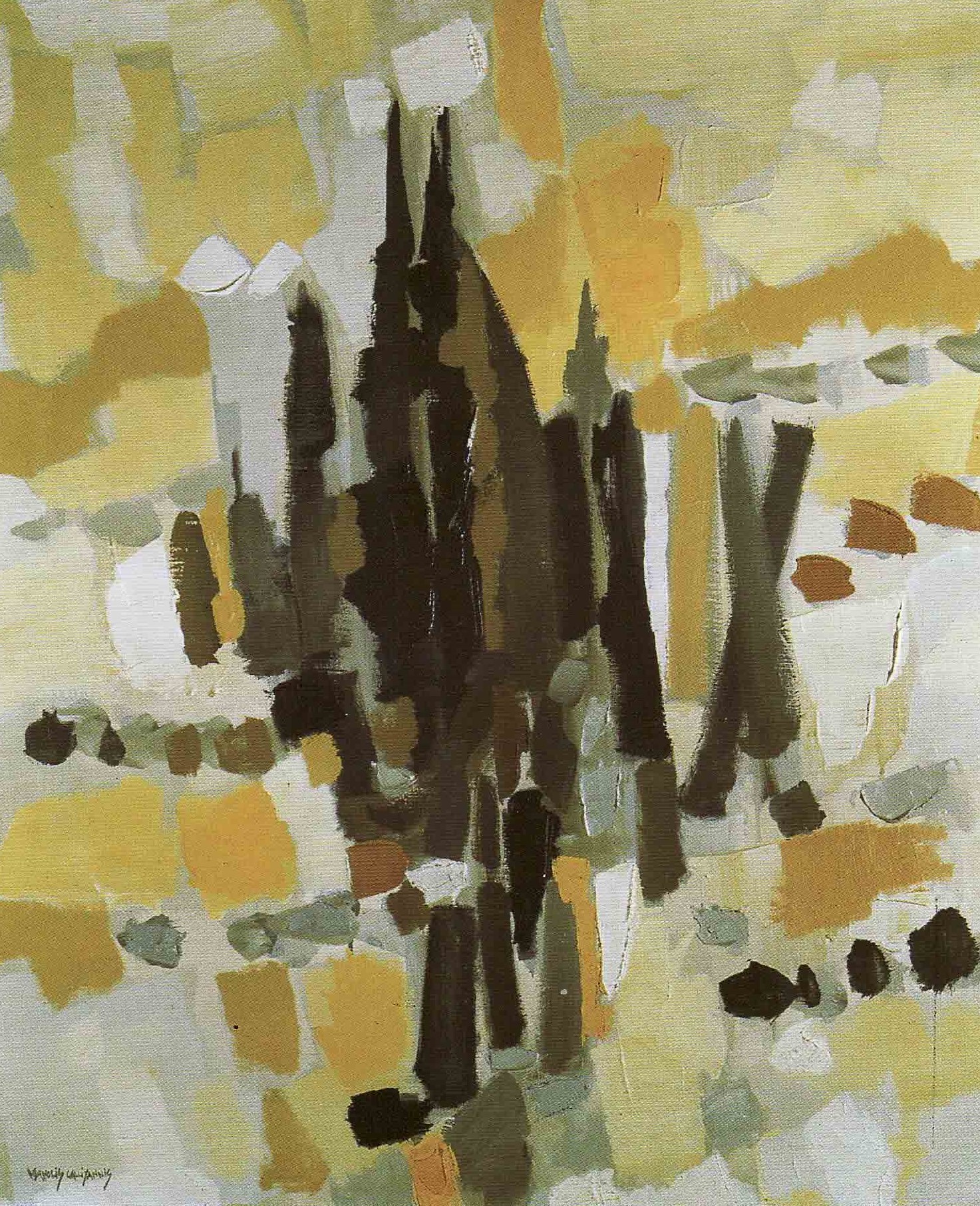Yiannis Moralis, Young Woman
Young Woman by Yiannis Moralis is part of a large unit of works titled Epithalamia. The painting brings to mind images from the tomb steles of Kerameikos. Moralis’ painting stands out for its constant evolution from realistic to abstract representation. The rendering of the figure became symbolic, through the gradual abstraction of the physical aspect.
The young woman
A young woman is depicted alone, pensive and magnificent. Her body is rendered in imperceivable everyday movements, with an aura of grandeur.
Playing with shapes
Horizontal and vertical lines define the surface and create a neutral, austere background. The lying-down figure stretches on that background.
The absolute white of her body is composed almost exclusively of curved shapes. It is suffocating within the intentionally limited surface area of the painting.
This is Moralis’ way to recall images from the tomb steles of Kerameikos, the first public cemetery in Ancient Athens. There, the important female figures of oblivion are enclosed by the harsh rectangular outline.
The limited colour palette
The only colours in the painting are white, grey, black and light ochre. The first 3 dominate the composition. Some small surfaces come in at a light red colour.
The painting is also brightened by a thin bold yellow outline, surrounding the dark window. It could be the beaming light of Aegina’s full moon.
Yiannis Moralis had a soft spot for Aegina, even though he did not hail from the island. He spent several months a year there, in a house designed by famous architect Aris Konstantinidis. Aegina was a place of inspiration and creation for Moralis.
His life in a nutshell
Yiannis Moralis (1916-2009) was born in Arta. He studied Painting and Engraving at the Athens School of Fine Arts (1936-1937). There, he attended the workshops of Konstantinos Parthenis and Umberto Argyros. In 1933 he attended classes at Jean Kefalinos’ engraving workshop.
He continued his studies at the École Nationale Supérieure des Beaux-Arts in Paris (1937-1939). There he studied Painting under Charles Guerin and Murals under Ducos de l’ Haille. At the same time, he attended mosaic classes at the École des Arts et Métiers. He returned to Greece at the start of WWII and joined the army.
In 1947 he was appointed full professor at the preparatory department of the Athens School of Fine Arts. 10 years later he was appointed full professor of Painting, where he remained until 1983.
A prolific artist
Moralis’ work spans 6 decades. During this time, other than painting he also worked in ceramic art, illustrations and scenography.
He created paintings, scene sets, costumes, engravings, book and magazine illustrations, posters, pottery, architectural applications, etc.
In addition, he worked with the National Theatre, the Hellenic Choreodrama and the Karolos Koun Art Theatre.
Constant experimentation
The artist found himself in constant experimentation. He completed numerous sketches and studies related to the use of colour. His goal was to arrive at an end result that, on the one hand, was satisfactory to him and, on the other hand, served the purposes of the composition. In other words, he wanted to create a piece that would be in conciliation with the audience.
There was no differentiation between the function of his paintings and his applications. Moralis worked in the same fashion to complete a painting as he did for a large mural. He applied similar experimentations and continuous research to come up with the best aesthetic solutions.
A recognised artist
Moralis is considered one of the most important painters of the post-war generation. He had a significant impact on post-war art in Greece, both with his work and his teaching.
He received numerous accolades, such as the bronze medal in the Panhellenic Art Exhibition of 1940 and the gold medal at the International Craft Fair in Munich (1973). He was also appointed regular member of the International Institute of Letters and Arts (1962), was awarded the Commander of the Order of the Phoenix (1979) and the Excellence Award for Letters and Arts by the Academy of Athens (1979).
He participated in group and international exhibitions, the most important being the Venice Biennale (1958) and the Biennale Internationale de la tapisserie (1965, 1972) in Lausanne.
In 1988 a retrospective exhibition of his works was held at the National Gallery. In 1996 the Academy of Athens organised an exhibition in his honour.
Yiannis Moralis at Alpha Bank
The Alpha Bank Art Collection also features Moralis works:
From realism to abstraction
Young Woman by Yiannis Moralis is part of a large unit of works titled Epithalamia. The painter created them between 1965-1970.
During this time, his painting evolved from realistic representation to a conscious deconstruction of the elements of the work, and a tendency to preserve the essence of the representation.
The work of art in our publications
The painting Young Woman by Yiannis Moralis is referenced in the Alpha Bank publications:
- The Alpha Bank Collection. Paintings – Prints – Sculptures, edited by Irene Orati. The publication marks the 125th anniversary of Alpha Bank.
Buy the publication The Alpha Bank Collection. Paintings – Prints – Sculptures on the Alpha Bank e-shop (only available in Greek). - The Alpha Bank Collection. Greek Art from 1920 until Today, edited by Irene Orati. The publication accompanied the Art Collection’s exhibition at the Macedonian Museum of Contemporary Art in Thessaloniki.
Buy the publication The Alpha Bank Collection. Greek Art from 1920 until Today on the Alpha Bank e-shop. - Mazi magazine (issue 52, November-December 2018).
In other literature
The painting is also referenced in the books:
- Yannis Bolis, Yiannis Moralis, 2005 (in Greek).
- Antonis Kotidis, Modernism and Tradition in Greek Post-war and Contemporary Art. Painting-Sculpture-Architecture 1940-2010, 2011 (in Greek).
- Gérard A. Goodrow, Global Corporate Collections, 2015.
The Alpha Bank Art Collection is not open to the public.
Research visits to the Art Collection can be organised upon request.
Contact us to book your visit.
